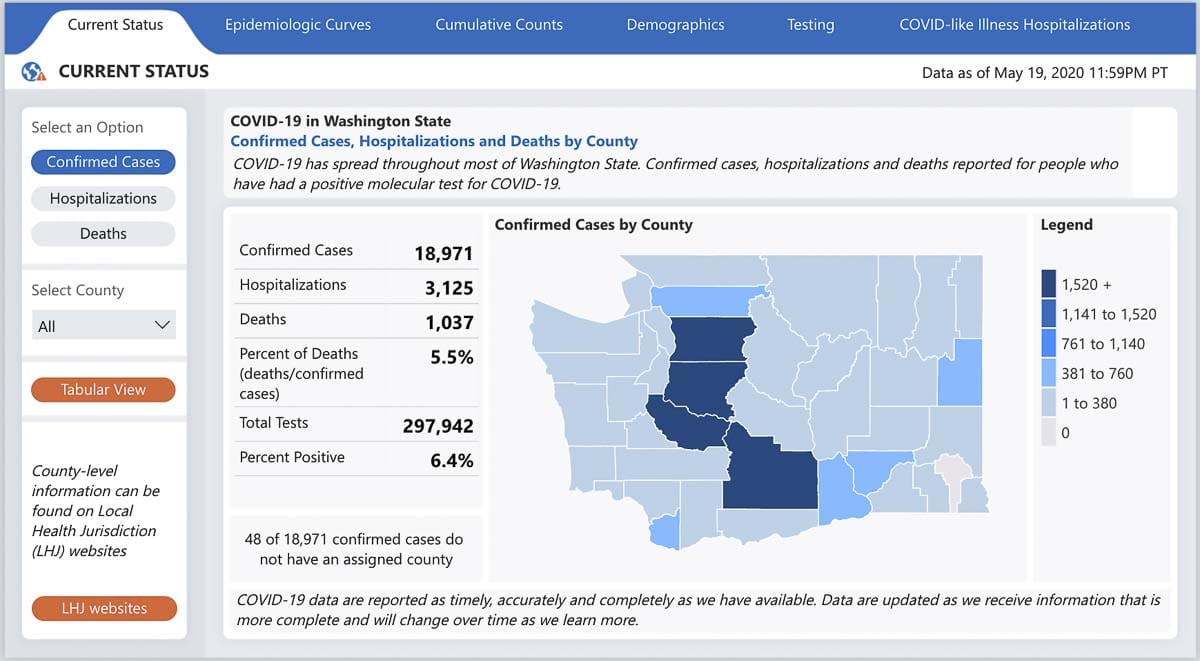Real-time numbers are a different method than normal for the department
CLARK COUNTY — In an effort to bring greater clarity to their methods, officials from the Washington State Department of Health (DOH) hosted an online presentation about the counting and tracking of COVID-19 deaths.
In recent weeks, the DOH has drawn criticism for labeling various deaths as COVID-19 related or caused. In fact, this methodology is not meant to mislead or be inaccurate, but rather to be timely and informative, according to DOH Health Statistics Manager Katie Hutchinson, PhD, MSPH.

“We’re aware that there is some confusion about how this works, and whether or not this modified process is accurate,” Hutchinson said. “Our goal from the very beginning of the outbreak has been to get our data out as quickly as possible and to provide information in as near real-time as possible even if the data are preliminary. Given the complexity of the outbreak, our data and our data systems, this really has not been an easy task.”
Hutchinson explained that the decision to provide real-time data was made early on in the pandemic and is not the DOH’s standard operating procedure for tracking deaths. The most visible result of this method is on the online dashboard that displays the deaths; every person who has died and tested positive for COVID-19 is included.
The DOH’s normal procedure for releasing death data typically takes about 18 months, whereas COVID-19 deaths are usually being released after just one day. Hutchinson said that the department is very aware of the smaller number of deaths that have made it onto the dashboard that are later determined not to have been caused by COVID-19. These deaths will be removed over time, she said.

“We know that the quality of information naturally improves over time,” Hutchinson said. “That will allow us to improve our death counts. Ultimately, as I will describe in a little bit, we suspect that we are actually more likely to be under counting deaths than over counting them … It may take up to a year or more to get final counts on COVID-19 deaths.”
When someone dies, the registration of their death, including causes, is legally required within three business days. That 18-month period then begins, in which the full readout of that person’s death certificate is assembled and placed through data quality processes.
With a COVID-19 death or suspected death, the three days still apply, but the 18 months is not feasible during a pandemic. So that time is greatly reduced in the name of accurate and more timely data. The accuracy is still high, as it is based off of the information on hand from the hospital, coroner or medical examiner, according to Hutchinson.
Through an online system known as the Electronic Death Registration System (EDRS), DOH received death information from across the state. Data such as age, date of death, date of birth, and cause of death are included. Once all the information is updated and approved it moves to the Vital Records System, and at that point is completely finalized.
“I want to reiterate that our information in EDRS is preliminary, not final and is kind of the processing zone for death certificates,” Hutchinson said. “Death certificates are not final until it is approved and officially registered in our Vital Records System. This process can take days to weeks to happen. So when we do this linkage to our Communicable Disease System, we are able to identify then that we know a death has happened to a positive case.”
This information is then sent to the local health department from the area the death occurred. In the case of Clark County, that is Dr. Alan Melnick and his staff at Clark County Public Health.
The DOH admits that there are issues with this system. This becomes clear when as many as five deaths included in the COVID-19 dashboard involve gunshot wounds. In addition, Hutchinson estimated 20 to 30 deaths which are much harder to rule out, but do not include COVID-19 as a cause of death.
Many of these deaths include things like Alzheimer’s and cancer, which obviously can kill on their own, but which can also be hastened by COVID-19, Hutchinson said.
“We currently have a number where it says unspecified natural causes, for example, again for these deaths, we really aren’t able to make a determination on whether they died from COVID or not,” she said. ”We’re currently reporting only deaths that are identified to a COVID positive case. We have a number of deaths, and right now it’s just under 100, where the death certificate indicates that the person is COVID-19, or probable COVID-19, we’ve not been able to link them to a positive case in our disease tracking system. So we’re not able to definitively rule them in or rule them out.”
Hutchinson concluded her presentation with the information about 3,000 deaths that could be COVID-19 related with things like respiratory syndromes, but have not been so categorized as of yet due to a lack of testing or tracing. These deaths will be categorized into COVID-19 or not, based on data examination determining if there was a higher than average amount of deaths in that time.




